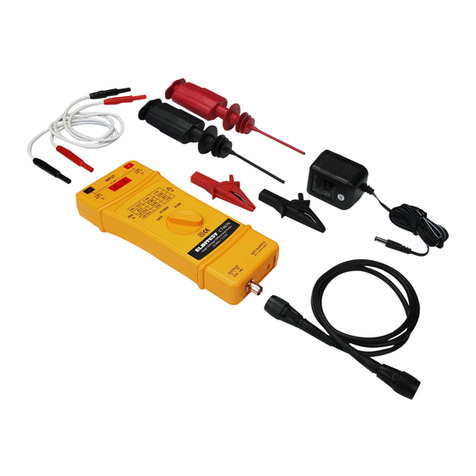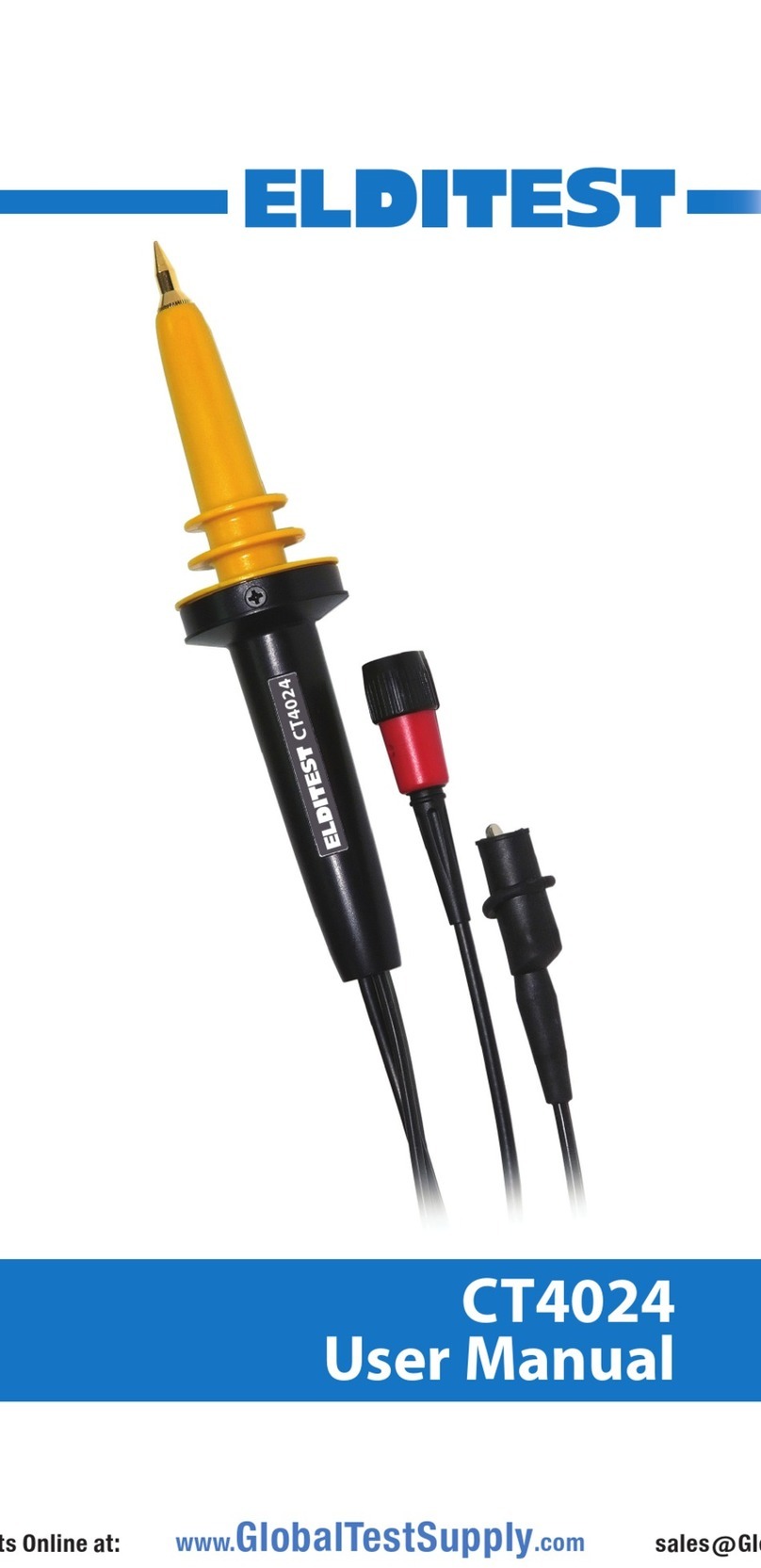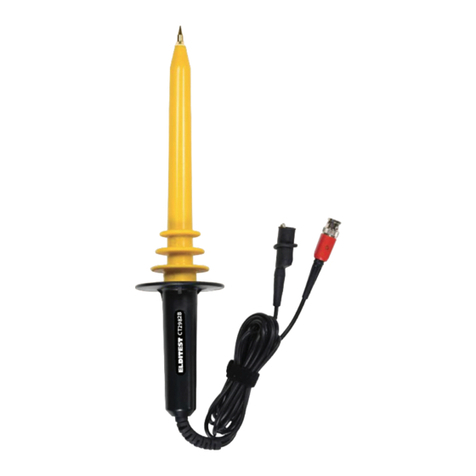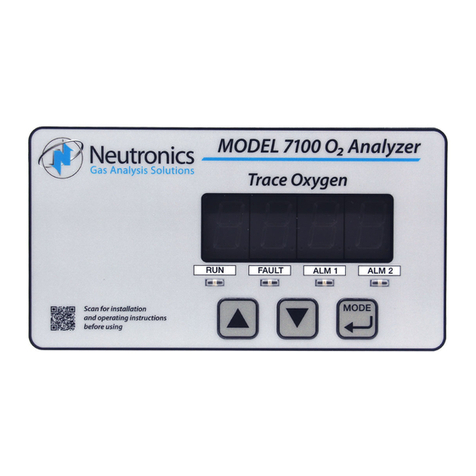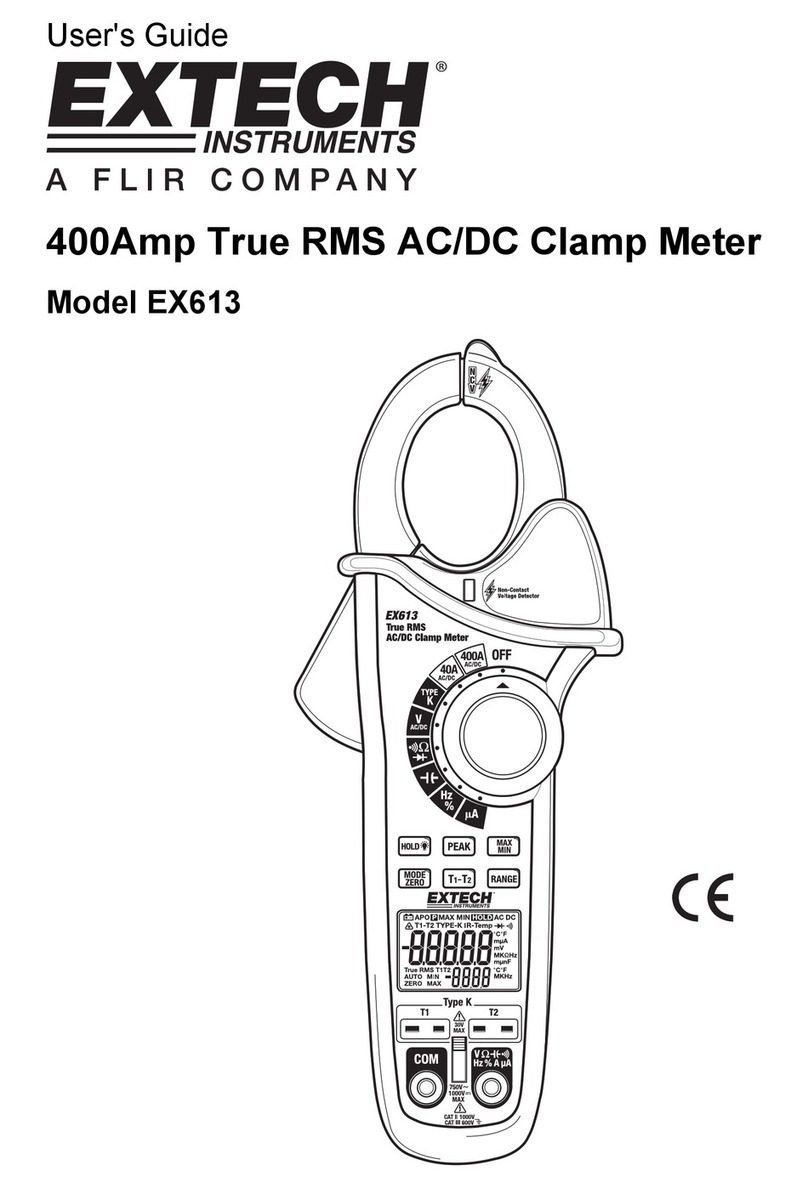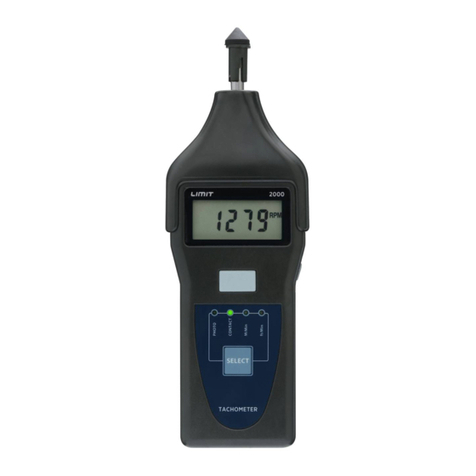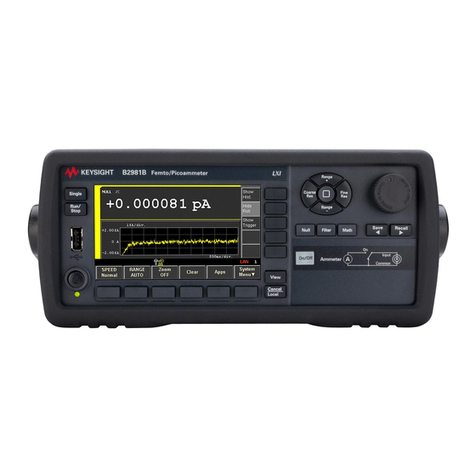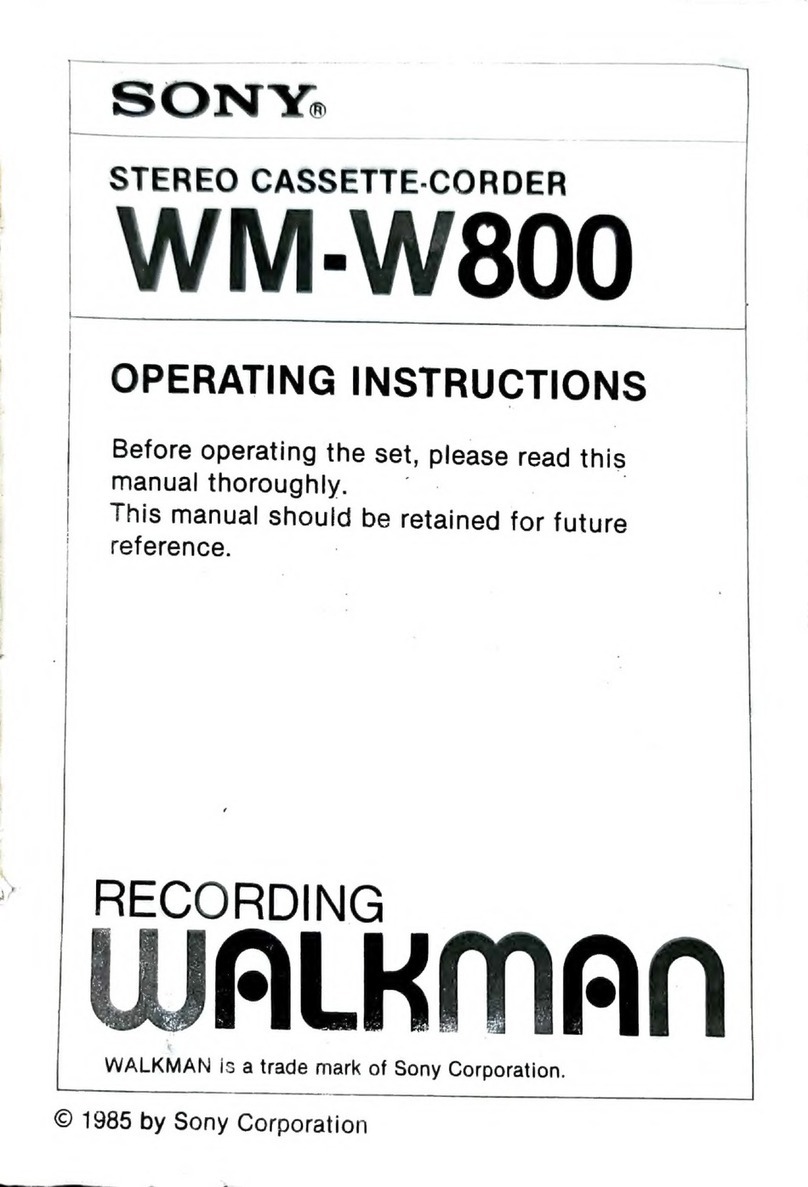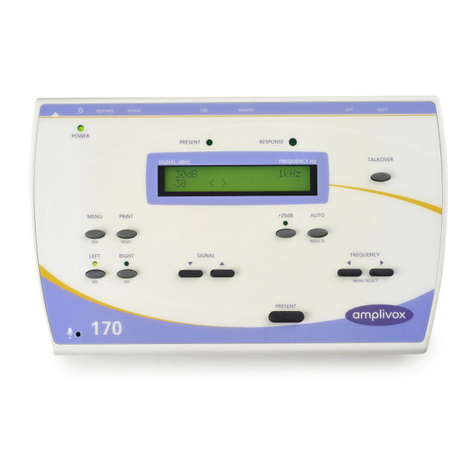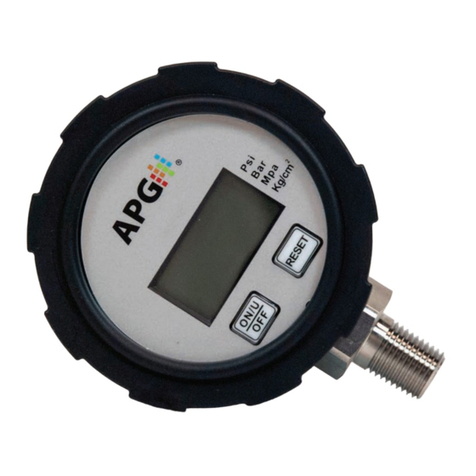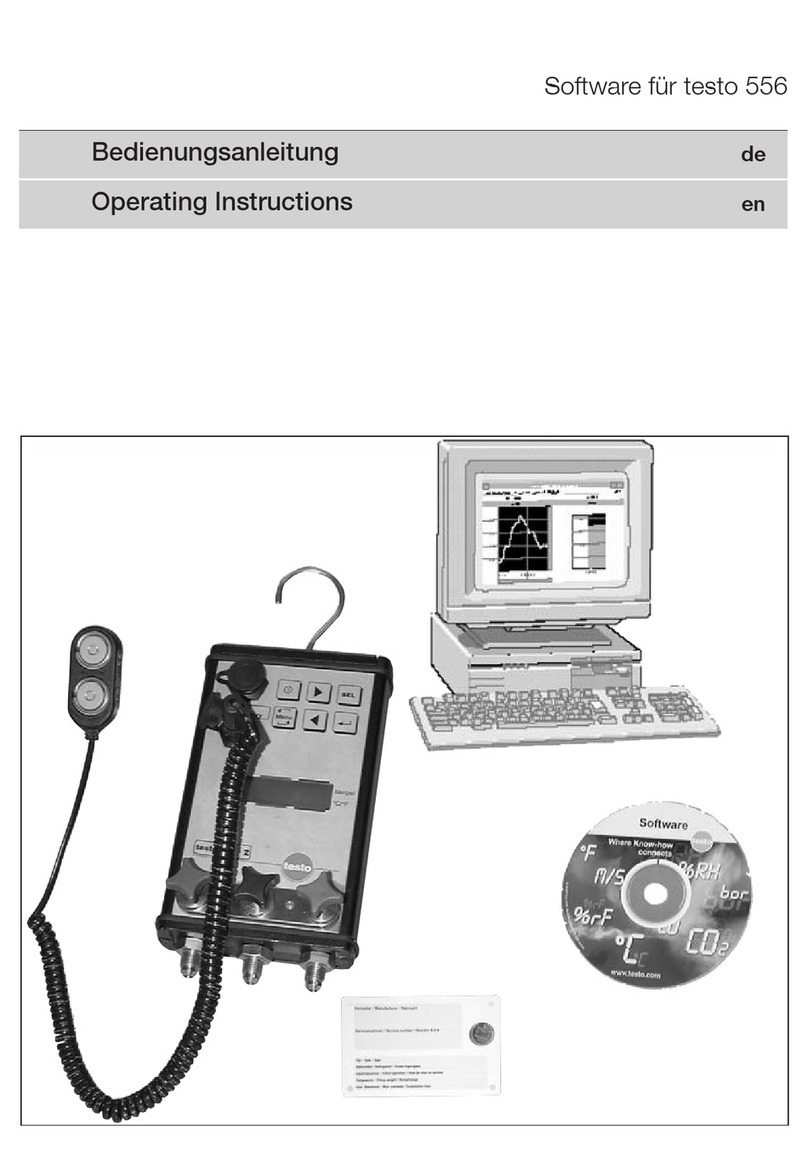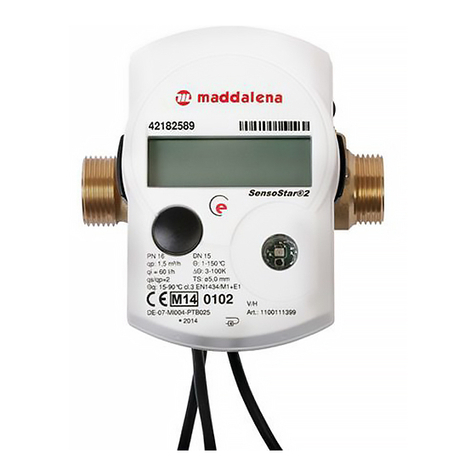Elditest CT4028 User manual

CT4028
User Manual
www. .com information@itm.com1.800.561.8187

1
© 2015 All rights reserved.
Elditest is a trademark of Sefram Instruments and
Systems.
Elditest products are covered by US and foreign
patents, issued and pending. Information is this
publication supersedes all earlier versions.
Specifications subject to change without notice.
Compliance Statements
Disposal of Old
Electrical& Electronic
Equipment
(Applicable in the European Union
and other European countries with
separate collection systems). This
product is subject to Directive
2012/19/EU of the European
Parliament and the Council of the European Union
on waste electrical and electronic equipment
(WEEE), and in jurisdictions adopting that Directive,
is marked as being put on the market after August
13, 2005, and should not be disposed of as
unsorted municipal waste. Please utilize your local
WEEE collection facilities in the disposition of this
product and otherwise observe all applicable
requirements.
www. .com information@itm.com1.800.561.8187

2
Safety Summary
WARNING CAUTION
To avoid personal injury and/or product
damage, review and comply with the
following safety precautions. These
precautions apply to both operating and
maintenance personnel and must be
followed during all phases of operation,
service, and repair of this instrument.
Only qualified personnel should use this
probe. This high voltage probe is designed
to be used by personnel who are trained,
experienced, or otherwise qualified to
recognize hazardous situations and who
are trained in the safety precautions
necessary to avoid possible injury when
using such a device.
This instrument is intended for usage
within Measurement Category I (CAT I)
only.
Do not exceed 60 seconds of contact
between the probe and circuit-under-test
when measuring voltages ≥30kV (DC +
ACpk) or 20kV (ACrms). It is recommended
to wait an interval of 5 minutes between
such measurements.
Do not work alone when working with high
voltages.
www. .com information@itm.com1.800.561.8187

3
Do not apply to the input any potential
that exceeds the maximum rating of the
probe.
For your own safety, inspect the probes
for cracks and frayed or broken leads
before each use. If defects are noted, DO
NOT USE the probe.
Hands, shoes, floor and work bench
must be dry.
Avoid making measurements under
humidity, dampness or other
environmental conditions that might affect
safety.
Turn the high voltage source off before
connecting or disconnecting the probe
whenever possible.
The probe body should be kept clean
and free of any conductive contamination.
Do not remove the probe casing.
Removal of the probe’s casing may expose
you to electric shock.
Keep fingers behind the probe’s finger
guard during use.
www. .com information@itm.com1.800.561.8187

4
Always properly ground the probe with
the lead before contacting high voltage
circuits with the probe tip. Always
disconnect the probe tip from high voltage
circuits before disconnecting the ground
lead. Do not connect the probe ground lead
to any point which is at a potential other
than earth ground.
Use only on test instruments where the
chassis or return lead is properly
grounded.
Use only in office-type indoor setting
The instrument is designed to be used in
office-type indoor environments. Do not
operate the instrument:
•In the presence of noxious, corrosive,
or flammable fumes, gases, vapors,
chemicals, or finely-divided
particulates.
•In environments where there is a
danger of any liquid being spilled on
the instrument.
•In air temperatures exceeding the
specified operating temperatures.
•In atmospheric pressures outside the
specified altitude limits or where the
surrounding gas is not air.
Use in an indoor Pollution Degree 2
environment. Measurements made by this
instrument may be outside specifications if
the instrument is used in non-office-type
environments. Such environments may
include rapid temperature or humidity
www. .com information@itm.com1.800.561.8187

5
changes, sunlight, vibration and/or
mechanical shocks, acoustic noise,
electrical noise, strong electric fields, or
strong magnetic fields.
Not for critical applications. This
instrument is not authorized for use in
contact with the human body or for use as
a component in a life-support device or
system.
Hazardous voltages may be present in
unexpected locations in circuitry being
tested when a fault condition in the circuit
exists.
Do not substitute parts that are not
approved by Cal Test Electronics or modify
this instrument. Return the instrument to
Cal Test Electronics for service and repair
to ensure that safety and performance
features are maintained.
AWARNING statement calls attention to
an operating procedure, practice, or
condition, which, if not followed correctly,
could result in injury or death to personnel.
A CAUTION statement calls attention to
an operating procedure, practice, or
condition, which, if not followed correctly,
could result in damage to or destruction of
parts or the entire product.
www. .com information@itm.com1.800.561.8187

6
Table of Contents
1General Information 6
1.1 Product Overview 6
1.2 Features 6
1.3 Accessories 7
2Using the Probe 8
3Frequency Compensation 9
3.1 200 Hz Adjustment 10
3.2 200 kHz and Bandwidth Adjustments 10
4Specifications 12
5Voltage Derating Curve 13
6Cleaning 13
7Service & Warranty Information 14
7.1 Limited One-Year Warranty 14
7.2 Calibration and Repair 15
1 General Information
1.1 Product Overview
The Elditest CT4028 is a 39 kV High
Voltage divider probe for use with both
digital and analog oscilloscopes.
1.2 Features
•Measuresup to: 39 kV (DC + ACpk)or
27 kVrms AC
•DC to 220 MHz bandwidth
•Voltage dividing of 1000:1
•Frequency compensation
www. .com information@itm.com1.800.561.8187

7
1.3 Accessories
1. Grounding Alligator Clip
2. High Voltage Isolation Head (for use
with ≥25 kV)
3. Trimmer Tool
4. Grounding Lead Extension Cable
5. Frequency Compensation Trimmers
6. BNC Cable
7. Main Grounding Lead
8. Hands-Free Bolt-On Probe Tip
9. Standard Probe tip
10. Hands-Free Hook Probe Tip
Figure 1: CT4028 Probe Accessories
www. .com information@itm.com1.800.561.8187

8
2 Using the Probe
1. Connect the probe to the BNC input of
the oscilloscope.
2. On the oscilloscope, select the desired
volts/division range. Whenever
available, set the probe attenuation
ratio setting to 1000:1.
3. WARNING If possible, always turn the
high voltage source off before
connecting or disconnecting the probe.
4. WARNING Connect the probe
grounding lead (via alligator clip) to a
good earth ground or reliable chassis
ground.
5. For the best frequency response,
when measuring frequencies > 40
MHz use only the Main Grounding
Lead plus the Grounding Alligator Clip.
(Figure 1). For frequencies < 40 MHz
the Grounding Lead Extension Cable
may be used and will give you better
reach with the probe.
6. WARNING Before turning on the high
voltage source, be certain the operator
is not touching any part of the device
under test.
7. Turn on the high voltage source.
8. You will now be able to analyze the
voltage waveform on your
oscilloscope.
9. WARNING Always attach the High-
Voltage Isolation Head to the probe
when working with voltages ≥25 kV.
Gently turn the head clockwise to
screw onto the tip of the probe. See
Figure 2.
www. .com information@itm.com1.800.561.8187

9
10. CAUTION Do not exceed 60 seconds
of contact between the probe and
circuit-under-test when measuring
voltages ≥30 kV (DC + ACpk) or ≥20
kV (ACrms). It is recommended to wait
an interval of 5 minutes between such
measurements.
11. Turn off the high voltage source.
12. WARNING Disconnect the probe from
the high voltage source BEFORE
disconnecting the ground clip lead.
3 Frequency Compensation
Proper compensation of the probe is
required to assure amplitude accuracy of
the waveform being measured by matching
the probe to the oscilloscope’s input
capacitance. Compensation should be
adjusted whenever the probe is connected
to, or transferred between, oscilloscopes.
The procedure is the same as for a x10
passive probe.
Figure 2: High Voltage Isolation Head
www. .com information@itm.com1.800.561.8187

10
3.1 200 Hz Adjustment
1. Connect the probe to the oscilloscope.
2. Apply a 200 Hz square wave to the
probe tip and adjust the oscilloscope
controls to display a few cycles of the
waveform.
3. Turn the 200 Hz Trimmer (Figure 3)
using the Trimmer Tool, making a flat
topped square wave (Figure 5).
3.2 200 kHz and Bandwidth Adjustments
4. CAUTION 200 kHz and bandwidth
adjustments should only be made by a
qualified engineer. Remove the plastic
cover to access these trimmers.
5. Change the square wave output to
200 kHz or to the frequency you will
be using in your testing.
6. Turn the 200 kHz Trimmer for a flat
topped square wave (Figures 3 & 5).
7. Turn the Bandwidth Trimmer for tuning
the probe’s bandwidth (Figure 3).
Figure 3: Frequency Compensation Trimmers
www. .com information@itm.com1.800.561.8187

11
Figure 4 shows how over- and under-
compensated pulse responses will look.
Figure 5 shows a perfectly compensated
probe.
Figure 5: Good Compensation
Figure 4: Over/Under Compensation
www. .com information@itm.com1.800.561.8187

12
4 Specifications
All specifications apply to the unit after a
temperature stabilization time of 15 minutes over an
ambient temperature range of 25 °C ± 5 °C.
CT4028
39 kV High Voltage Probe
Operating Parameters
Maximum Input Voltage
(CAT I)
39 kV (DC + ACpk)
27 kVrms AC
Maximum Loading
Current
45 µA
Division Ratio
1000:1
Bandwidth
DC to 220 MHz
Compensation Range
10 pF to 35 pF
Temperature Coefficient
≤200 ppm/ºC
Input Resistance
900 MΩ
Input Capacitance
2.0 pF
Rise Time
1.6 ns
Signal/Noise
> 60 dB @ 1 kHz
> 50 dB @ 1 MHz
Accuracy
DC Volts
≤3% (0 to 35 kV)
AC Volts
≤3% at 1 kHz
General
Cable Length
6.6 ft (2 m)
Designed for Use in
Pollution Degree 2
Operating Temperature
14ºF to 131ºF (-10ºC to 55ºC)
Storage Temperature
-4ºF to 158ºF (-20ºC to 70ºC)
Humidity
≤85% relative humidity at
95ºF (35ºC)
Dimensions
3.1 x 3.1 x 12.6 in
(8 x 8 x 32 cm)
Weight
1.0 lbs (460 g)
Warranty
One-year warranty
Specifications are subject to change without notice.
To ensure the most current version of this manual,
please download the current version from our
website: caltestelectronics.com.
www. .com information@itm.com1.800.561.8187

13
5 Voltage Derating Curve
WARNING
When measuring higher frequency signals,
be sure to comply with the Voltage vs.
Frequency Derating Curve.
6 Cleaning
Clean only the exterior probe body and cables. Use
a soft cotton cloth lightly moistened with a mild
solution of detergent and water. Do not allow any
portion of the probe to be submerged at any time.
WARNING
Dry the probe thoroughly before attempting to make
voltage measurements.
CAUTION Do not subject the probe to solvents or
solvent fumes as these can cause deterioration of
the probe body and cables.
Figure 6: Voltage Derating Curve
www. .com information@itm.com1.800.561.8187

14
7 Service & Warranty
Information
7.1 Limited One-Year Warranty
Cal Test Electronics warrants this product
to be free from defective material or
workmanship for a period of 1 year from
the date of original purchase. Under this
warranty, Cal Test Electronics is limited to
repairing the defective device when
returned to the factory, shipping charges
prepaid, within the warranty period.
Units returned to Cal Test Electronics that
have been subject to abuse, misuse,
damage or accident, or have been
connected, installed or adjusted contrary to
the instructions furnished by Cal Test
Electronics, or that have been repaired by
unauthorized persons, will not be covered
by this warranty.
Cal Test Electronics reserves the right to
discontinue models, change specifications,
price, or design of this device at any time
without notice and without incurring any
obligation whatsoever.
The purchaser agrees to assume all
liabilities for any damages and/or bodily
injury which may result from the use or
misuse of this device by the purchaser, his
employees, or agents.
www. .com information@itm.com1.800.561.8187

15
This warranty is in lieu of all other
representations or warranties expressed or
implied and no agent or representative of
Cal Test Electronics is authorized to
assume any other obligation in connection
with the sale and purchase of this device.
7.2 Calibration and Repair
If you have a need for any calibration or
repair services, please visit us on the web
at: caltestelectronics.com. See the
“Support” link.
www. .com information@itm.com1.800.561.8187

1
© 2015 Tous droits réservés
Elditest est une marque déposée de Sefram
Instruments et Systèmes.
Les produits Elditest font l’objet de brevets déposés
ou en cours. Les informations présentes dans ce
manuel remplacent toutes les informations
antérieures. Les spécifications peuvent être
modifiées sans préavis.
Pour obtenir des informations, le SAV ou le support
technique:
•Appelez le 1-800-572-1028 ou visitez
www.caltestelectronics.com
Déclarations de Conformité
Elimination des vieux
équipements électriques
et électroniques
Applicable dans tout les pays de
l’union européenne ainsi que dans
les pays européens disposant
d’un système de tri sélectif). Ce
produit est règlementé par la
Directive 2002/96/CE du parlement européen et du
Conseil de l’Union européenne sur les déchets
d’équipement électriques et électroniques, et pour
les pays ayant adopté cette Directive, il est signalé
comme étant placé sur le marché après le 13 août
2005 et ne doit pas être éliminé comme un déchet
non trié. Pour vous débarrasser de ce produit,
veuillez faire appel à vos services de collecte des
DEEE et observer toutes les obligations en vigueur.
www. .com information@itm.com1.800.561.8187

2
Prescriptions de Securite
ATTENTION AVERTISSMENT
Afin d’éviter les blessures et une
détérioration du produit, examiner et
conformez vous aux précautions de
sécurité ci-dessous. Ces précautions
s’appliquent au personnel qui utilise et qui
répare et doivent être scrupuleusement
suivies.
Seul un personnel qualifié peut utiliser
cette sonde. Cette sonde haute tension
est conçue pour être utilisée par un
personnel formé, expérimenté ou des
personnes qualifiées pour identifier les
situations dangereuses et qui comprennent
ces précautions de sécurité afin d’éviter
toute blessure lors de l’utilisation d’un tel
appareil.
Cet instrument est conçu pour
fonctionner uniquement dans les
mesures de la Catégorie I (CAT I).
Ne dépassez pas 60 secondes lors
d’une mesure haute tension. Lorsque
vous mesurez des tensions de ≥30 kV (DC
+ ACc) ou ≥20 kVeff AC, attendez pendant 5
minutes entre les mesures.
Ne travaillez pas seul lorsque vous
travaillez en présence de hautes tensions.
www. .com information@itm.com1.800.561.8187

3
N’appliquez pas sur la sortie une tension
qui dépasse le niveau maximum de la
sonde.
Pour votre propre sécurité, inspectez les
sondes avant chaque utilisation pour vérifier
qu’il n’y ait pas de fissures ou de craquelures
sur les câbles. Si vous constatez des défauts,
n’utilisez PAS la sonde.
Les mains, les chaussures, le sol et la
paillasse doivent être secs.
Evitez de faire des mesures avec une
humidité excessive ou toute autre condition
environnementale qui pourrait nuire à la
sécurité.
Coupez la source haute tension lorsque
vous connectez ou déconnectez la sonde,
lorsque c’est possible.
Le corps de la sonde doit être gardé propre
et exempt de toute contamination conductrice .
N’ouvrez pas le boîtier de la sonde. Si vous
ouvrez le boîtier de la sonde, vous vous
exposez à des risques de choc électrique.
Toujours gardez les doigts derrière l’anneau
de garde de la sonde pendant l’utilisation.
www. .com information@itm.com1.800.561.8187

4
Connectez toujours la masse de la sonde
avec le câble avant de mettre les circuits
haute tension en contact avec la pointe de la
sonde. Toujours déconnecter la pointe de la
sonde des circuits haute tension avant de
déconnecter le câble de masse.
Utilisez uniquement des instruments dont les
châssis et le câble de mise à la terre sont
correctement mis à la terre.
Utilisez uniquement dans des environnements
de type bureau. Cet instrument est conçu pour être
utilisé à l’intérieur dans un environnement de type
bureau. Ne faites pas fonctionner l’appareil :
•En présence de fumées nocives, corrosives
ou inflammables, de gaz, de vapeurs, de
produits chimiques, de particules fines ou de
poussières en suspension.
•Dans des environnements ou il y a le risque
qu’un produit liquide soit renversé sur
l’instrument.
•A des températures ambiantes dépassant les
températures de fonctionnement spécifiées.
•Dans des pressions atmosphériques en
dehors des limites d’altitude spécifiées ou
lorsque le gaz environnant n’est pas de l’air.
Utilisez à l’intérieur avec un degré de pollution
de 2. Les mesures effectuées par cet instrument
peuvent être en dehors des spécifications si
l’instrument est utilisé dans des environnements qui
ne sont pas de type bureau. Par exemple : une
augmentation rapide de température ou un
changement d’hygrométrie, le soleil, les vibrations
www. .com information@itm.com1.800.561.8187
Table of contents
Languages:
Other Elditest Measuring Instrument manuals
Popular Measuring Instrument manuals by other brands

bluelab
bluelab pH Pen FAQ & Troubleshooting

AMI
AMI 1700 Installation, operation and maintenance instructions

Sierra
Sierra InnovaSonic 207i BACnet instruction manual
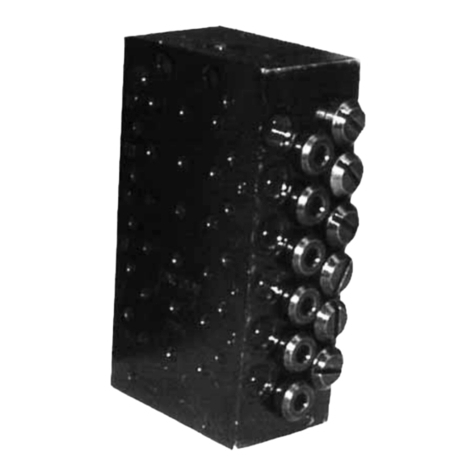
Lincoln
Lincoln Quicklub SSV D Series operating instructions
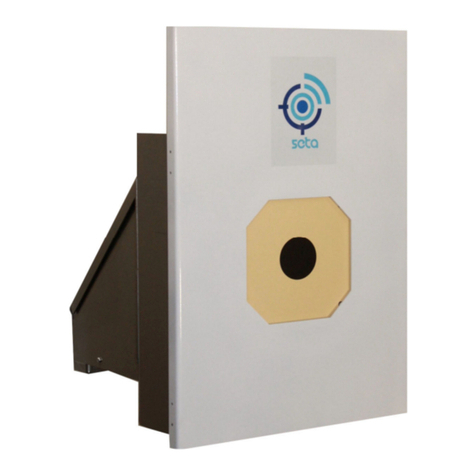
Seta Target Systems
Seta Target Systems SCORE10/Pro operating instructions
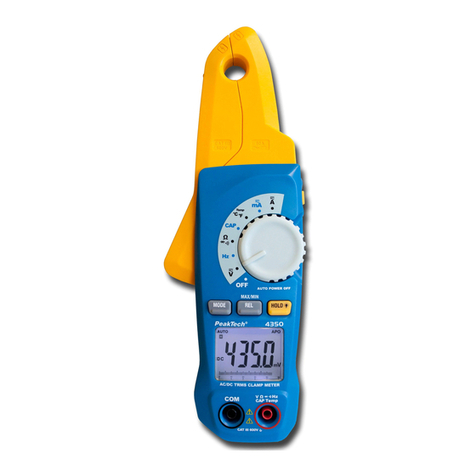
PeakTech
PeakTech 4350 Operation manual

